Embed presentation
Download as PDF, PPTX
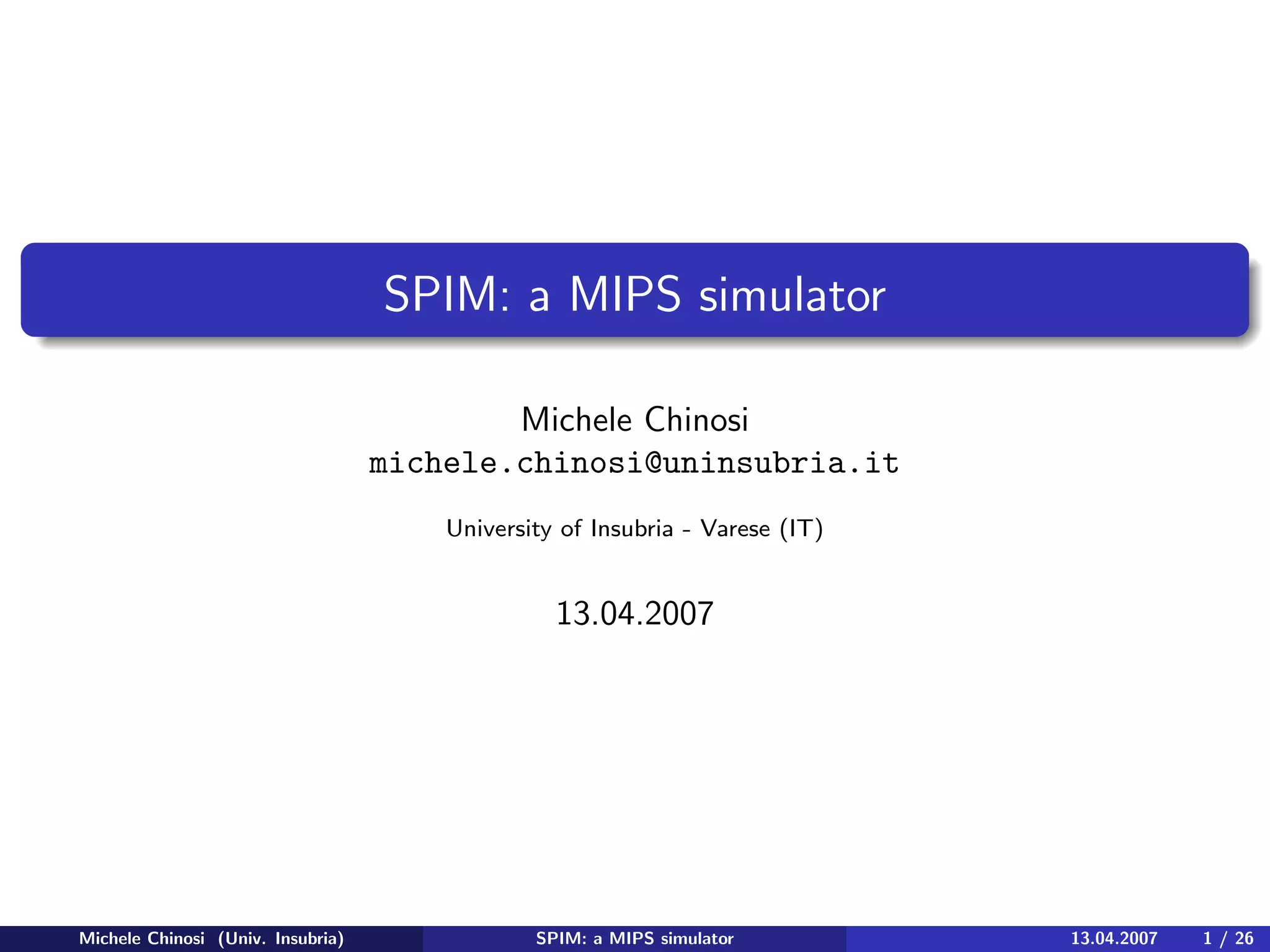
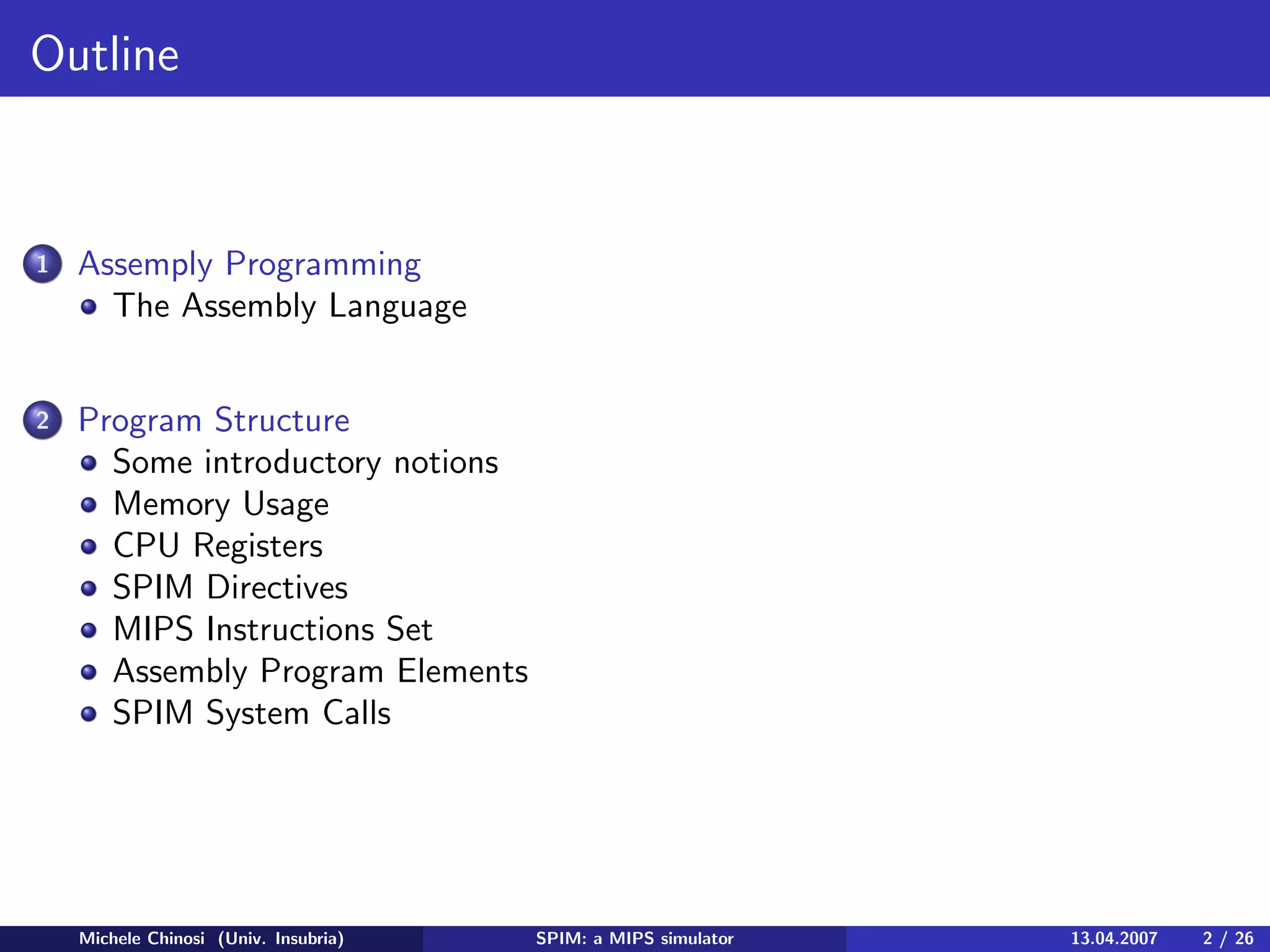









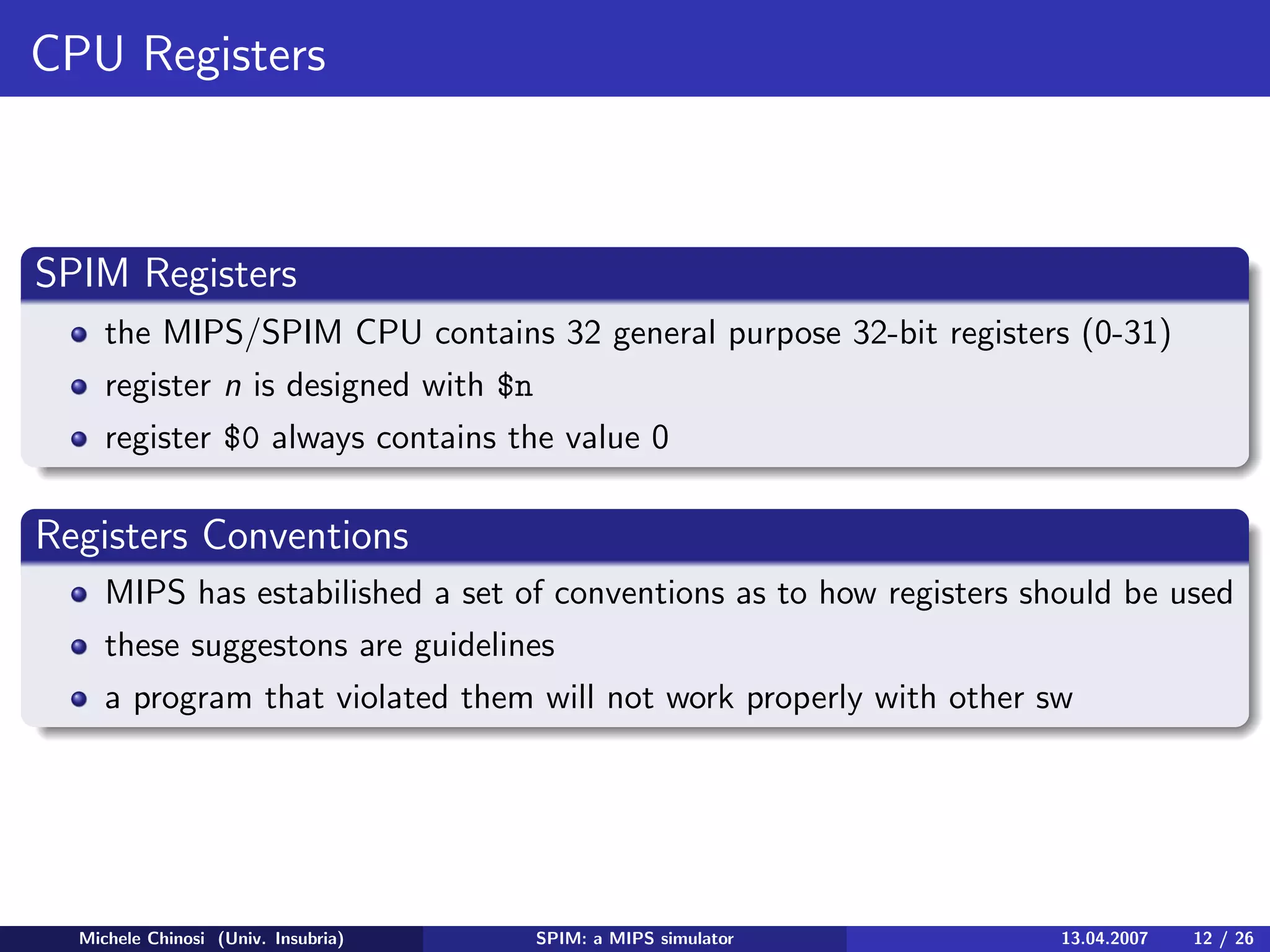

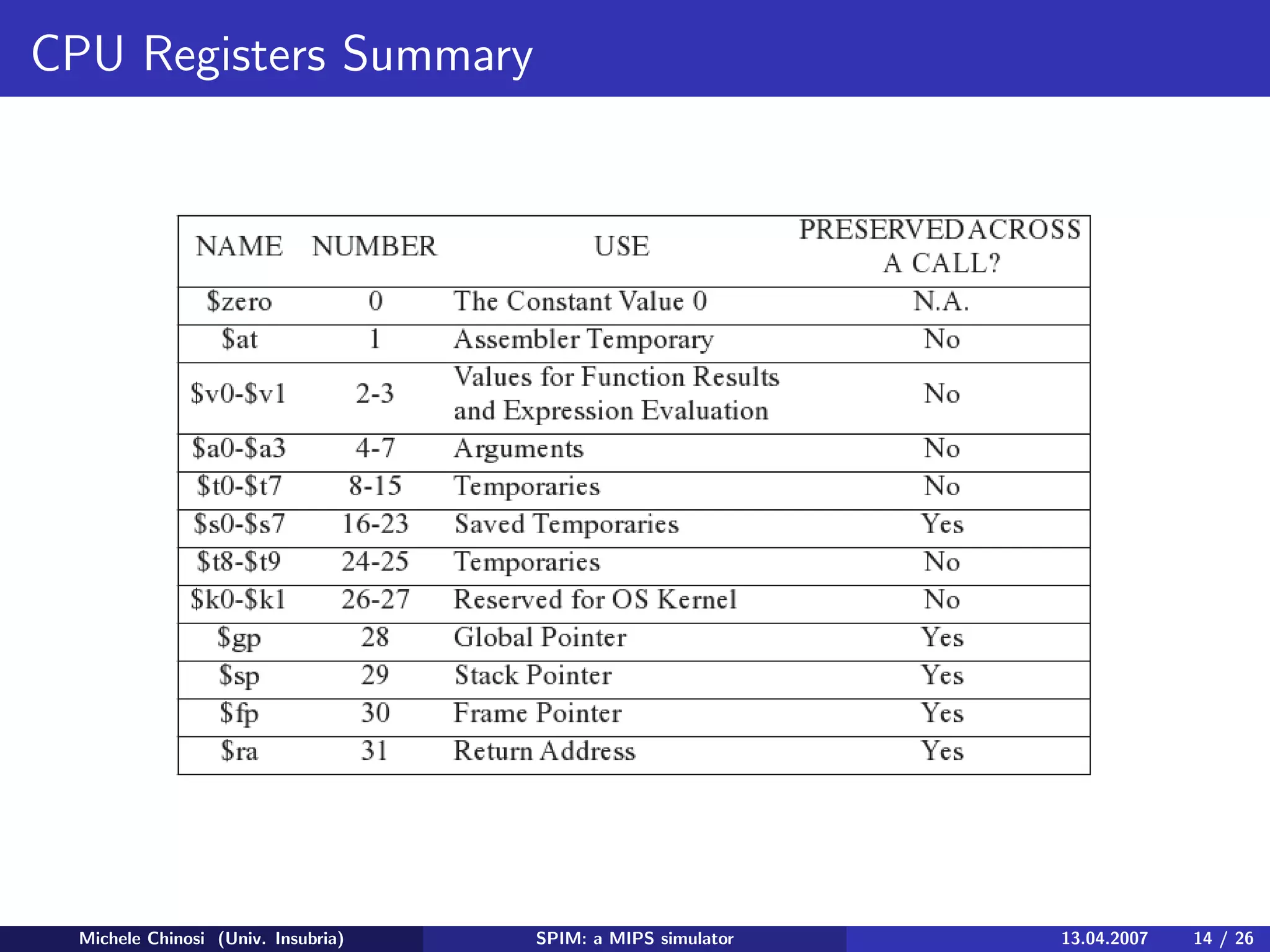

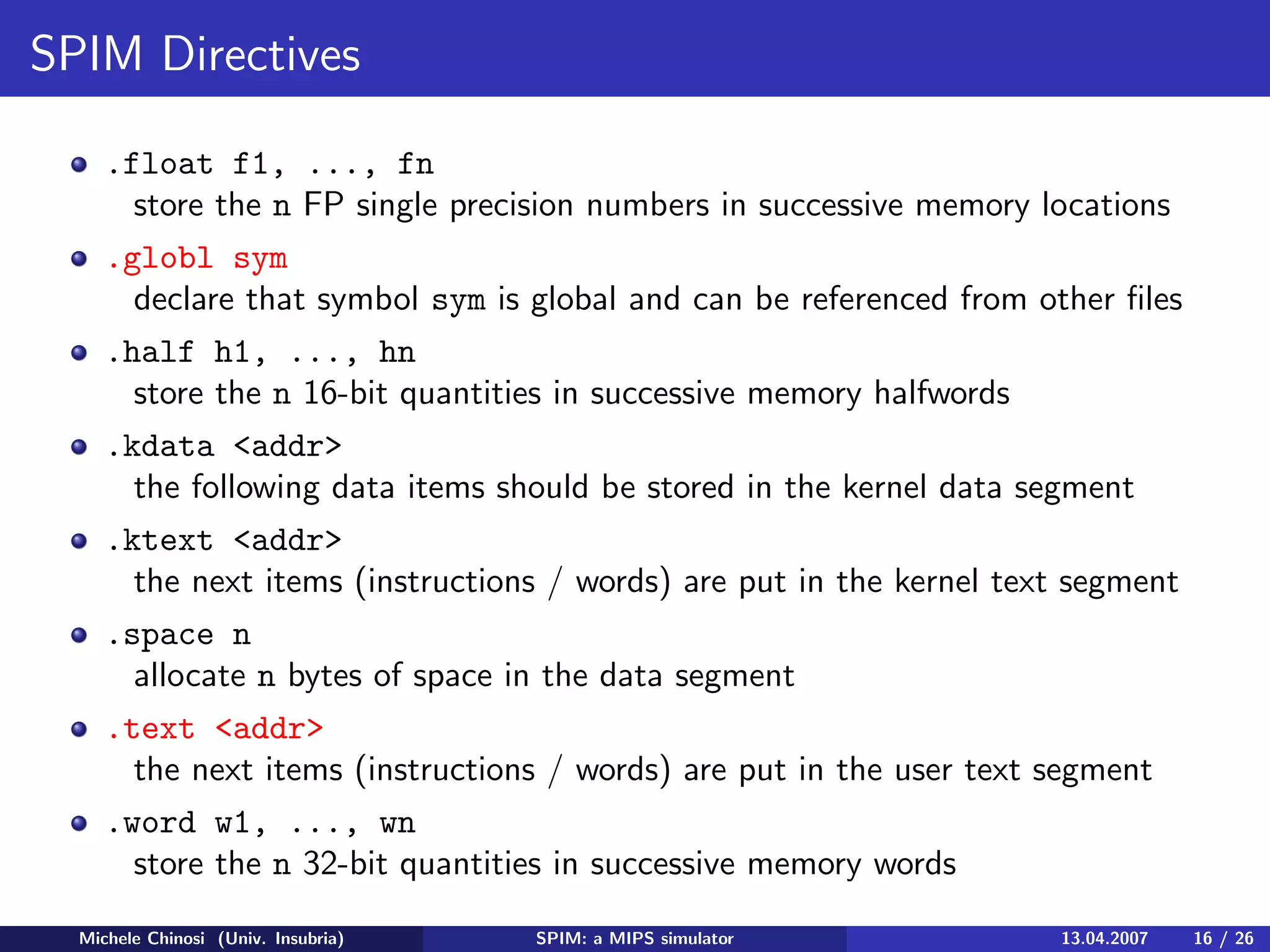
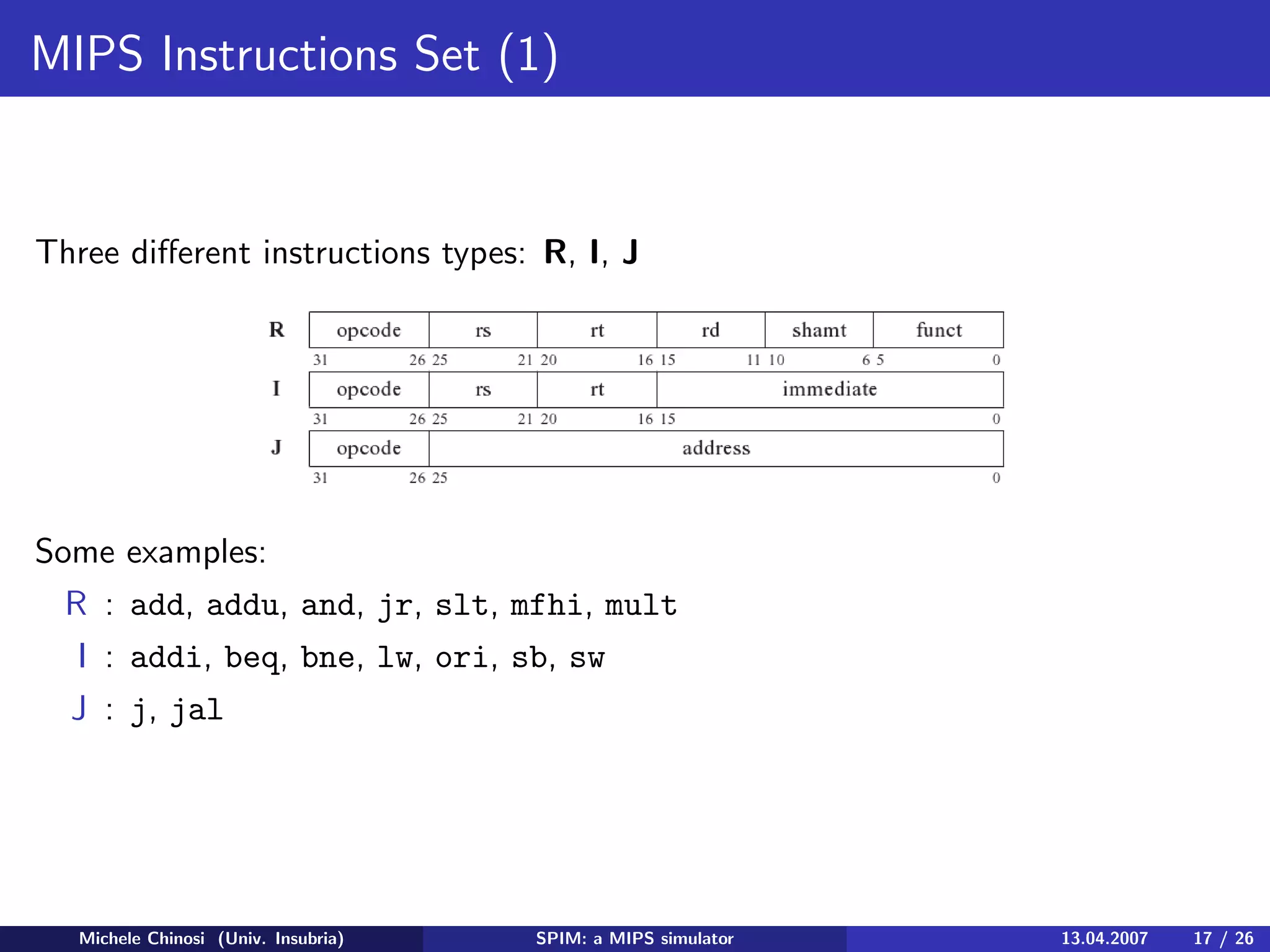
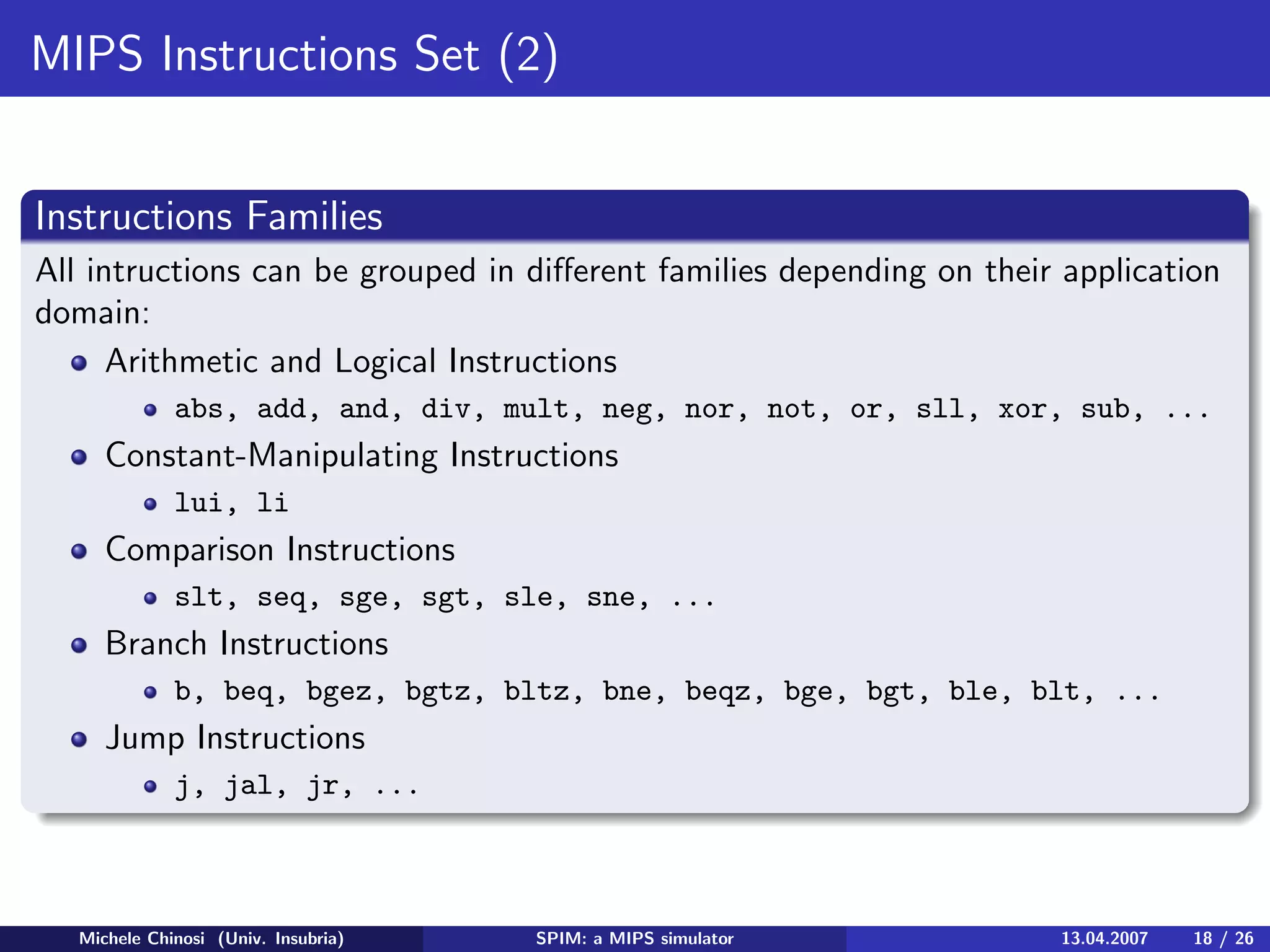


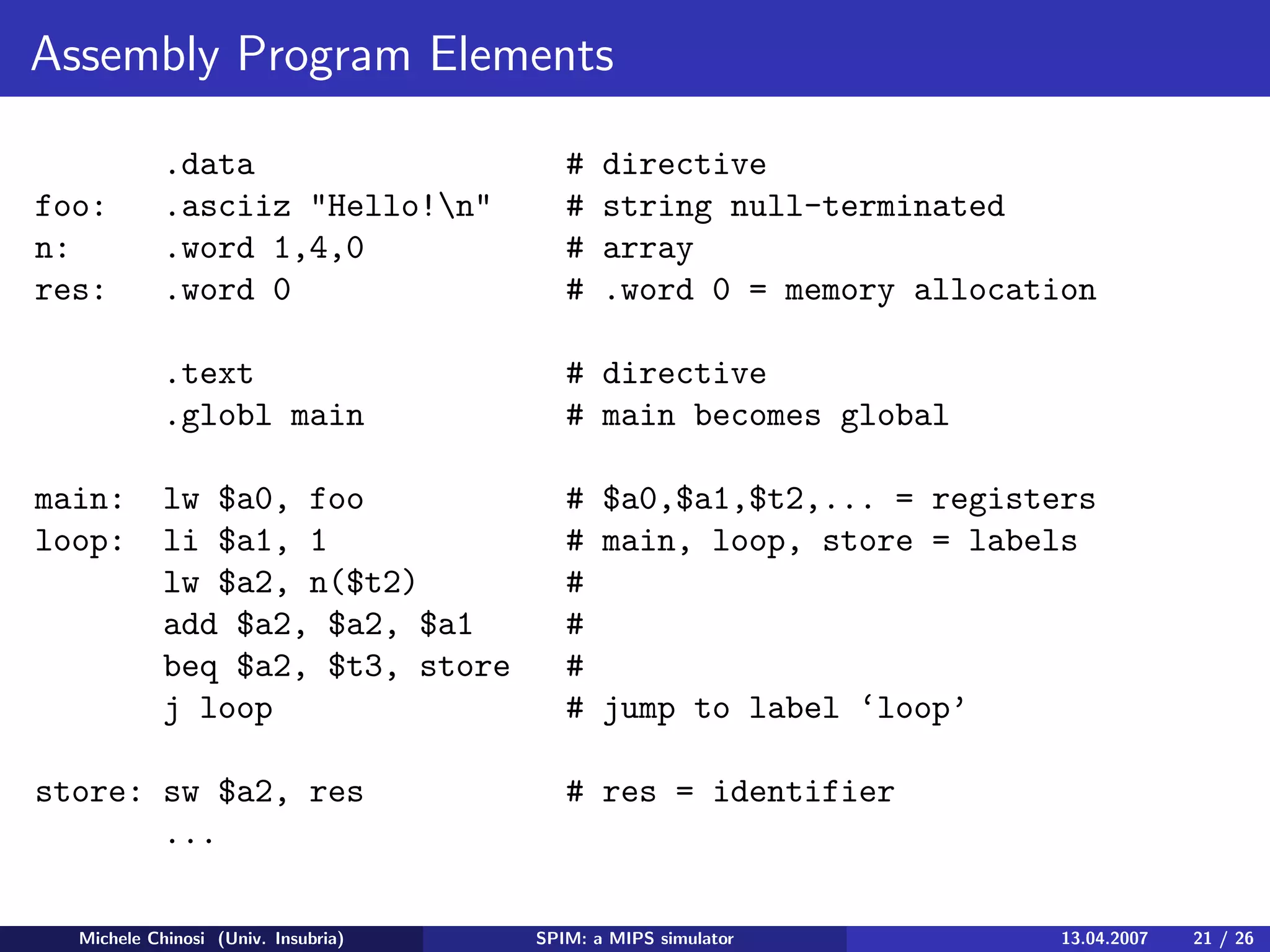
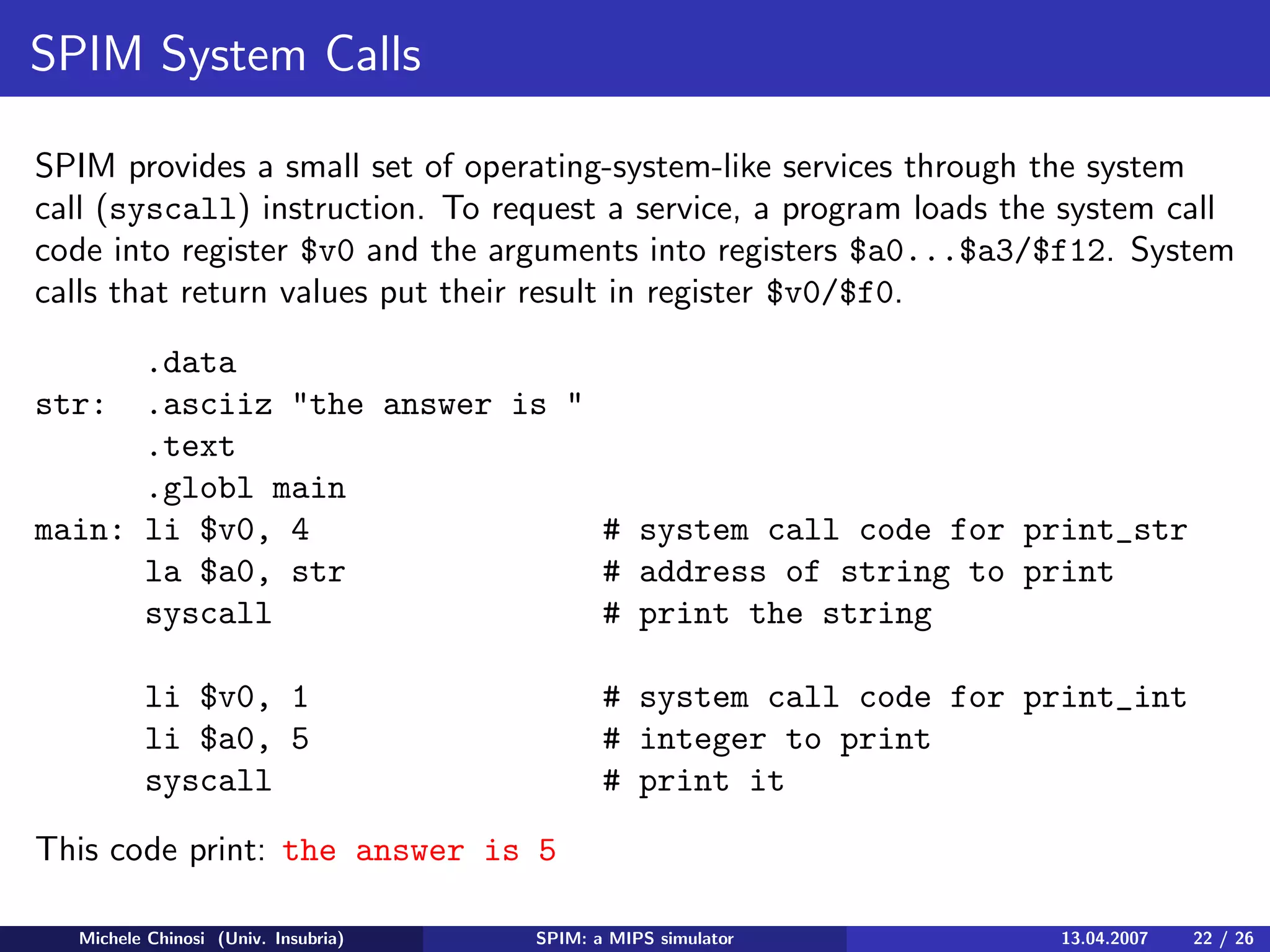



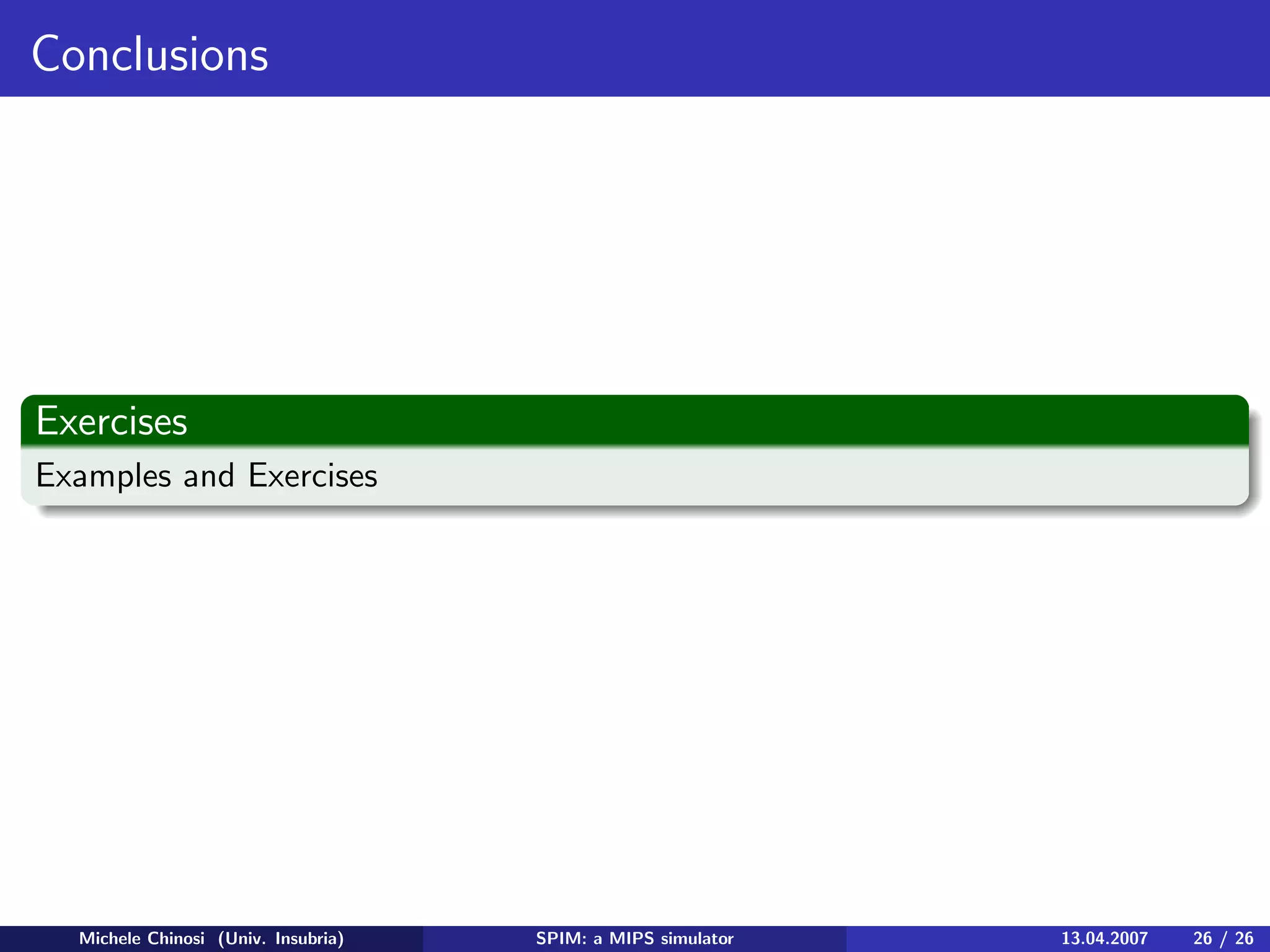

This document describes SPIM, a MIPS simulator. It provides an overview of MIPS assembly programming, including memory usage, registers, directives, instruction sets, and system calls. It also gives examples of assembly code, such as a "Hello World" program and an interactive version that takes user input.

























